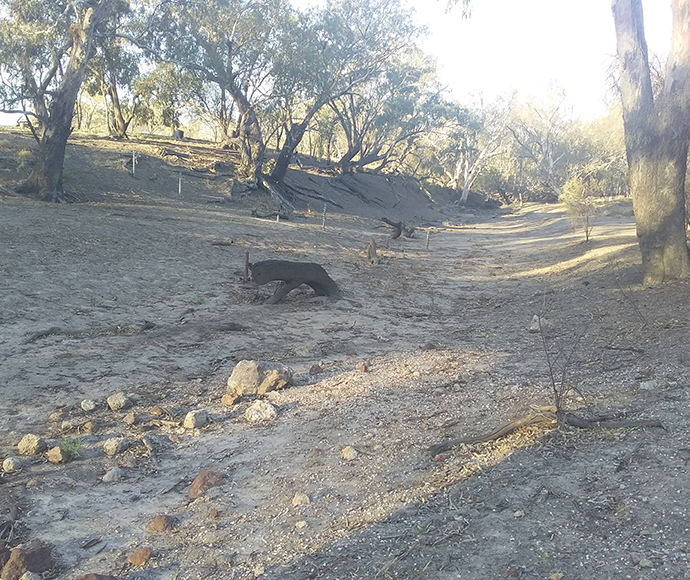
The Snowy River headwaters lie next to those of the Murray and Murrumbidgee rivers, together forming the alpine, sub-alpine and mountain catchments of these major rivers of south-east Australia. These rivers flow from Kosciuszko National Park, the largest national park in New South Wales.
The Snowy montane rivers and tributaries have been diverted in full or part for hydro-electricity generation and irrigation purposes.
The NSW portion of the Snowy catchment area is 9,070 square kilometres. The Upper Murrumbidgee Catchment covers 14,000 square kilometres of New South Wales and the Australian Capital Territory.
Water for rivers and wetlands
In 2022–23, environmental water managers will continue to build on the outcomes of previous years to improve the health of the Snowy montane rivers.
The Department of Planning and Environment (the department) worked with the Snowy Advisory Committee (SAC) and ecological experts to design planned releases for the Snowy rivers. Daily releases are planned prior to the start of the water year (i.e. May to April) for the 12 months ahead. A ‘natural flow scaling’ approach is applied by using the Thredbo River as a reference. Water managers use historical flow data from the Thredbo as a basis for designing releases each year for the Snowy. The Thredbo is a similar size snowmelt river to the modified Snowy below Jindabyne.
The focus for 2022–23 is to improve the condition of the Snowy River channel by providing a series of high flows and five eight-hour peaks to mobilise sediment that has built up in the riverbed and assist in returning the Snowy River to a healthy, albeit smaller, river.
The pattern for releases for the Snowy and upper Murrumbidgee rivers includes higher flow rates over winter, spring, and early summer to reflect flow patterns typical of the mixed rainfall and snowmelt river system.
During 2021–22, the department worked with Snowy Hydro Limited to deliver 209,877 megalitres of Snowy River Increased Flows and 88,800 megalitres of Snowy Montane Rivers Increased Flows to the snowy montane rivers.
2022 marks 20 years since the water for the environment program began in the Snowy River.
Weather and water forecast
The second consecutive La Niña1 began in November 2021 and is expected to continue until late-autumn 2022. The Bureau of Meteorology’s seasonal outlook for July to October 2022 indicates that rainfall is likely to be above median across the catchment.
With ongoing wet conditions, 203,000 megalitres of water for the environment is available for the Snowy River in 2022–23 water year. A foregone electricity generation of 150 Gigawatt hours (GWh) is available for the montane streams which is the equivalent to 57,000 megalitres for the montane streams and 35,773 megalitres for the upper Murrumbidgee River. There is sufficient environmental water allocation to deliver water to all of the targeted montane streams. Water is delivered to the montane streams by closing the aqueducts that were designed to divert water to storage dams, instead allowing water to overtop the weirs and continue to flow freely.
1.La Nina: The interaction between the sea surface and atmosphere over the Pacific Ocean which results in wetter conditions.
Resource availability scenario
 |
Very dry Main aim: Protect Avoid critical loss |
 |
Dry Main aim: Maintain Maintain river functioning |
 |
Moderate Main aim: Recover Improve ecological health and resilience |
 |
Wet to very wet Main aim: Enhance Restore key floodplain and wetland linkages |
Key planned actions for 2022–23
![]()
Geomorphology
Flows aims to improve Snowy River channel condition by providing 5 high flow events with 8-hour peaks. These high flow events will increase stream power (flow velocity) to flush fine sediment from the stream bed, reduce algae-smothering and clean riffles.
Native fish
Flows will be delivered to support native fish breeding and dispersal in the Snowy and montane rivers. Higher releases in winter and spring to the upper Murrumbidgee River will encourage spawning and movement for the endangered Macquarie perch. The upper Murrumbidgee supports one of only three remaining natural populations of the perch species in New South Wales.
Native vegetation
Releases will promote recruitment of aquatic native vegetation in low benches connected ponds, wetlands, and backwaters that support water-dependent animals including platypus and frogs. Multiple high releases into the Snowy River will also help to limit the encroachment of terrestrial plants in the riverbed.
Native animals
Planned releases will support a diversity of suitable habitats for water-dependent animals including macroinvertebrates, frogs, platypus, and turtles by increasing resource availability and productivity, and providing opportunities for breeding and recruitment. Inundation of connected wetlands and ponds will provide breeding opportunities for frog species.


